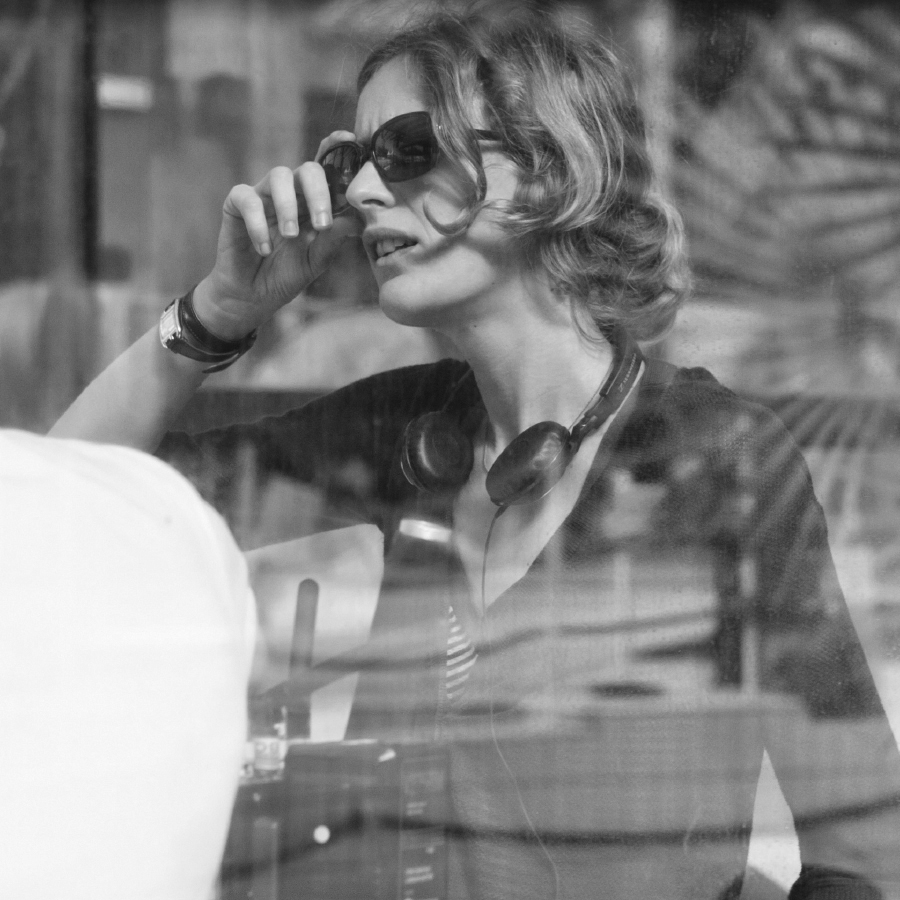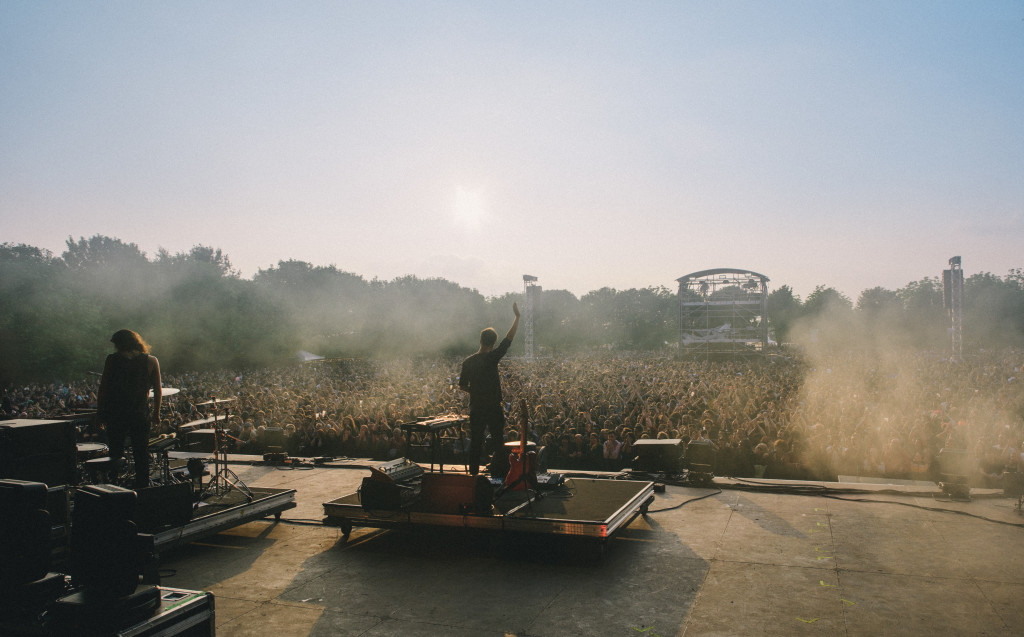
MIA HANSEN-LOVE AND SVEN LOVE ON DIRECTION
By Crash redaction
THE FIRST FILM TO PORTRAY THE RISE OF THE “FRENCH TOUCH” SCENE, “EDEN” IS ABOVE ALL THE STORY OF ONE UNIQUE MAN, PAUL, AND HIS ROMANTIC AND MUSICAL MEANDERINGS THROUGH THE LATE 90S. THE MOVIE WAS INSPIRED BY THE LIFE AND MEMORIES OF SVEN LØVE, THE DIRECTOR’S BROTHER AND AN INFLUENTIAL DJ AND ACTOR FROM THIS ERA OF COLLECTIVE ADVENTURE. WHAT FOLLOWS IS OUR SPECIAL MEETING WITH THE TWO AUTEURS BEHIND THE FILM.
“eden” is a film unlike any other. considering all the conflicting passions and desires, evoking the “french touch” scene today carries a fair amount of risk. and, of course, it’s difficult to please everyone interested in the topic. but mia hansen-løve has managed to avoid clichés and sidestep the temptation to documentarize, while producing a highly personal film marked by her intimate and uncompromising style. it’s an even more personal film because the story it tells is actually a family affair: the director made the film in concert with her brother, sven, who was one of the main players on the music stage of the time with his famous “cheers” parties and dj sets. “eden” follows him through his nocturnal wanderings and daily life, blending the banal with a sense of adventure… the scene is the café beaubourg, a place packed with memories for all who frequented its dance floors in the 80s and 90s. Mia hansen-løve and her brother sven join me on the mezzanine, and our conversation begins.
How did the “eden” film project come about?
Mia hansen-løve : the idea for the project first sprung up when i was finishing “goodbye first love” (2011). I can’t quite remember the exact moment, but i know i really
Wanted to do a generational film. At the same time, my partner, olivier assayas, was shooting a film related to his adolescence in the 70s, called “something in the air” (2012), which was a highly personal project. On some level, there is a sort of call and response relationship between olivier’s film and my own. The idea was to do a film, to tell a story touching on the collective spirit, on an adventure lived in common by my generation, our generation. One thing seemed obvious to me: the film had to be about music, which is the great unifying force of my generation. Between fifteen and twenty, i have a lot of memories from different parties, especially nights at what’s up bar, which was located in the bastille neighborhood back then, at 15, rue daval. That’s where my brother, sven, hosted his “cheers” parties. I remember sven mixing at the bar and how it was often broadcast live on radio fg, paris’s electronic music channel. So the film quickly became associated with sven in my mind. It was something that happened by itself, without me having to really even think about it…
Sven løve : i was into the idea as soon as mia mentioned it to me. At that time i wanted to branch out from my music to focus on another passion of mine: writing. So i immediately agreed to start brainstorming ideas for the film, by reflecting on my past and diving back into the years i lived through without ever really looking back…
In search of lost time, then?
Mhl : yes, in some ways it’s exactly that. Every life is a chronology and time never comes back.
Sl : a dialogue sprung up between us. Mia took a lot of notes during our talks, and then she wrote up a structure for the script, along with a few specific scenes. She had found the language of the film, the way we were going to speak, the tone. And on the basis of that, we began a constant dialogue, spontaneously building our way of writing from the anecdotes, memories and feelings evoked.
Mhl : the other dialogue in the film is with music. We started picking tracks as the writing went along and the film started taking shape on paper. Music had a very decisive and direct influence on the scene. We talked endlessly about what songs to pick, making lists and editing lists… there were so many lists! (laughs). The lists
Were also based on how sven remembered things… like sueño latino, for one.
Sl : yeah, what a track! It was clear to both of us that the film had to open with that song, especially derrick may’s incredible remix of it. Everything from the colorful jacket
To the unusual length (over ten minutes) and all the different contrasting styles: robotic, spacey, psychedelic… that track embodies a musical style that celebrates the song of machines: techno in its early days…
There really is a unique kind of chemistry between you two…
Mhl : of course! We’re extremely close. I’m seven years younger than sven, but i was already going out when he was hosting his parties. Back then i was thirteen, fourteen. I also went out a lot with one of sven’s friends, david blot, a mainstay of radio nova and one of the organizers alongside frédéric agostini and jérôme viger-kohler of the famous “respect” parties. We both love music, too. But to return to the film: at first it was going to be a project in two parts. But after exploring a bunch of different options, and after about a year and a half, i decided we would make it just one film.
How did you imagine thomas bangalter and guy-manuel de homem-christo, aka daft punk, fitting into the film?
Mhl : we really needed to focus on the essentials in the film. And, above all, it’s a story. What made sense to me was to take the people sven hung out with. Aside from a few
Cameos, all the characters in the film have different names (sven becomes paul, for example – a/n). But with daft punk, we kept their real names. They play a huge part in the film because they are one of the legendary figures of the french touch scene, and of my adolescence as well. I knew they had to make an appearance in the film. So i sent
The script to thomas and guy-man. They read it, loved it and gave their approval; it was that easy. On some level, i think they liked the idea of actors portraying them and how that adds to the story they’ve been building since they first started out. And thomas told me all sorts of stories, about getting kicked out of clubs back in the day, and more recently about the release party for “random access memories” at the famous silencio club in paris. My idea was to tell the story under the helmets, something other than how they present themselves to audiences. There is something mysterious about them, and i think the film suggests something along those lines, something about who they are. After seeing the film, a few journalists even thought it was actually thomas bangalter and guy-manuel de homem-christo playing themselves! And some people still think that! (laughs)
You called the film “eden”, in reference to a fanzine of the same name that was around at that time.
Sl : yeah, it was a beautiful fanzine with a great aesthetic. It was designed and developed by michael amzalag, who is now one half of the duo m/m (paris), perhaps the best graphic designers of their generation. “eden” was read by all the original fans of this music, which was already more than just music: it was a whole new culture. I also like the
Word because there is a double meaning to it: paradise lost, of course. From the very first raves and parties, there is already a sense that everything is going to be lost. Youth, innocence, insouciance… the robert creeley poem featured in the film sums it all up.
The film also reminded me of truffaut, like seeing a distant relative of antoine doinel…
Mhl : i like to hear that! Though i’m never trying to imitate or reference other films, there is definitely an attitude in those films that i really like and that i’m sure you can find in mine, too. One of the most important films for me is jean eustache’s “the mother and the whore”. It’s a film that had a huge influence on me and my generation, and also for so many others since!








